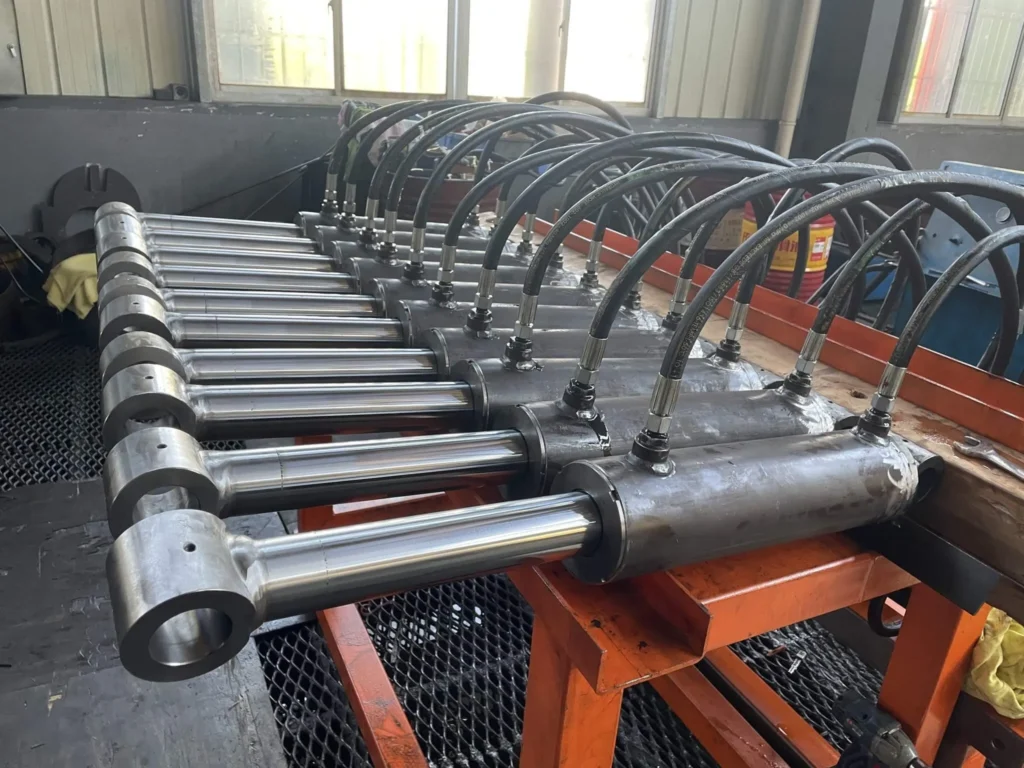Hydraulic Cylinder Overheating: Causes, Solutions, and Prevention Tips
Description:
Discover why hydraulic cylinders overheat, how to fix the problem, and actionable tips to prevent damage. Learn about seals, pressure settings, and maintenance best practices. Hydraulic cylinders are critical components in heavy machinery, construction equipment, and industrial systems. However, overheating is a common issue that can lead to reduced efficiency, component failure, and costly downtime. In this article, we explore the root causes of hydraulic cylinder overheating, effective solutions, and preventive measures to ensure optimal performance.

Why Do Hydraulic Cylinders Overheat?
Overheating occurs when the cylinder’s surface temperature rises abnormally, often signaling internal inefficiencies. Key causes include:
Excessive Internal Friction
Tight or Misaligned Seals: Over-compressed or improperly installed seals increase resistance between moving parts.
Poor Lubrication: Inadequate lubrication between the piston rod and seals generates heat.
High System Pressure
Operating beyond the cylinder’s rated pressure strains components, converting excess energy into heat.
Frequent Cycling
Rapid or continuous actuation without cooling intervals causes heat buildup.
Contaminated Hydraulic Fluid
Particulate contamination or degraded oil reduces lubrication efficiency and increases friction.
Environmental Factors
High ambient temperatures or poor ventilation exacerbate heat retention.
Signs of Hydraulic Cylinder Overheating
Hot-to-Touch Surface: Temperatures exceeding 82°C (180°F) indicate a problem.
Reduced Efficiency: Sluggish movement or loss of power.
Seal Degradation: Burnt or cracked seals due to prolonged heat exposure.
Discolored Hydraulic Fluid: Darkened or oxidized oil from thermal breakdown.
How to Fix Hydraulic Cylinder Overheating
1. Optimize Seal Installation
Replace worn or damaged seals (e.g., polyurethane or nitrile seals).
Ensure seals are lubricated and installed without twisting or over-tightening.
2. Adjust System Parameters
Lower Operating Pressure: Stay within the cylinder’s rated capacity.
Reduce Cycle Frequency: Allow cooling periods during intensive operations.
3. Improve Lubrication & Cooling
Use high-quality hydraulic oil with anti-wear additives.
Install heat exchangers or cooling fans in high-temperature environments.
4. Maintain Hydraulic Fluid Quality
Replace oil and filters regularly (follow OEM guidelines).
Monitor fluid cleanliness with ISO particle counts to prevent contamination.
5. Inspect for Mechanical Issues
Check for bent piston rods or misaligned mounts causing uneven friction.
Ensure proper cylinder mounting to avoid side-loading.
Preventing Hydraulic Cylinder Overheating
Regular Maintenance
Inspect seals, rods, and fluid monthly.
Clean piston rods to prevent abrasive particles from entering the system.
Upgrade Components
Use high-temperature-resistant seals (e.g., fluorocarbon).
Install temperature sensors for real-time monitoring.
Environmental Controls
Shield cylinders from direct heat sources.
Ensure adequate airflow around hydraulic systems.
Operator Training
Train staff to avoid overloading cylinders or operating at extreme speeds.
Hydraulic cylinder overheating is often preventable with proactive maintenance, proper component selection, and system optimization. By addressing friction, pressure, and fluid quality, operators can extend cylinder lifespan and minimize downtime. For complex issues, consult a hydraulic specialist to diagnose and resolve underlying system faults.
